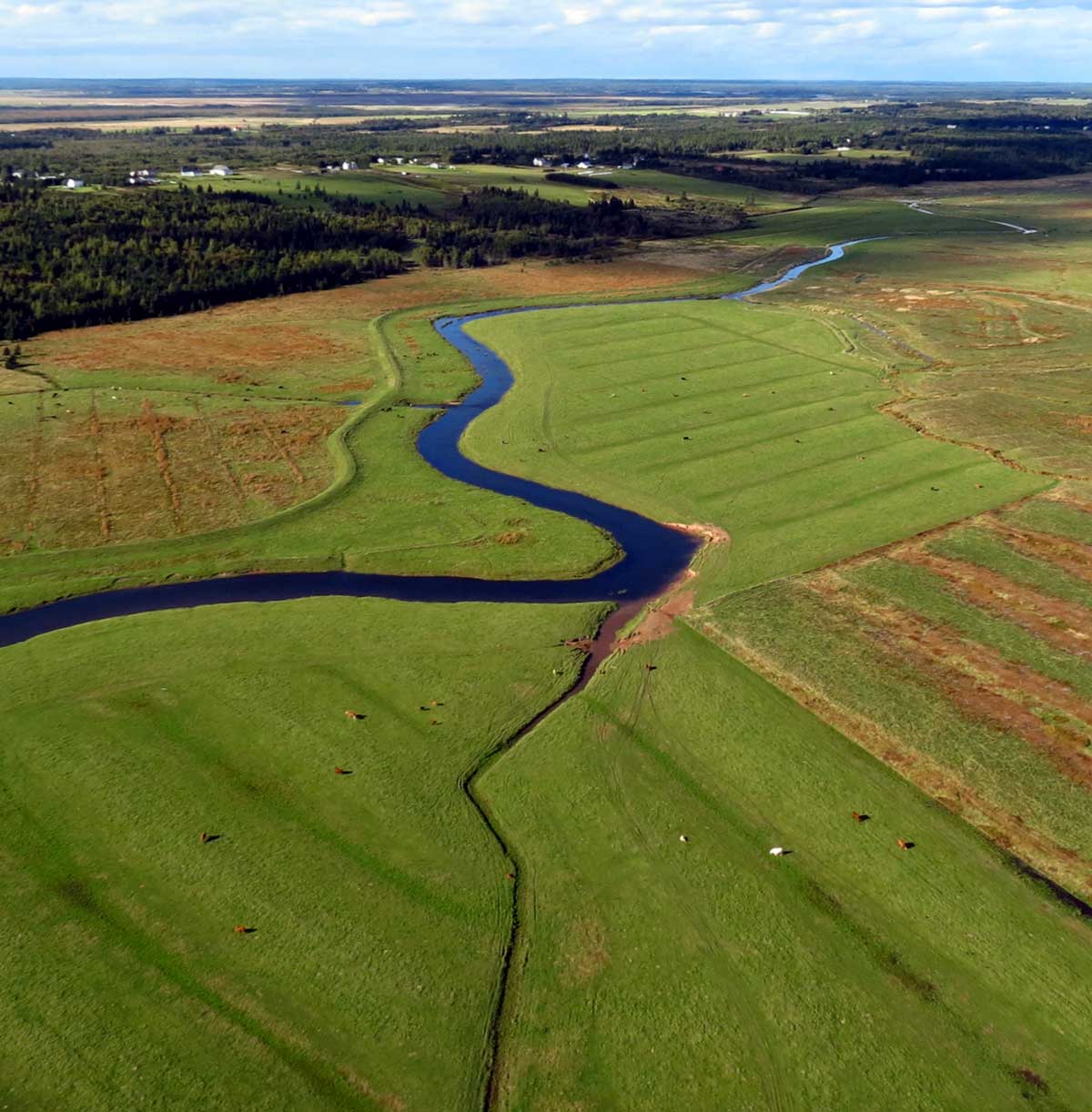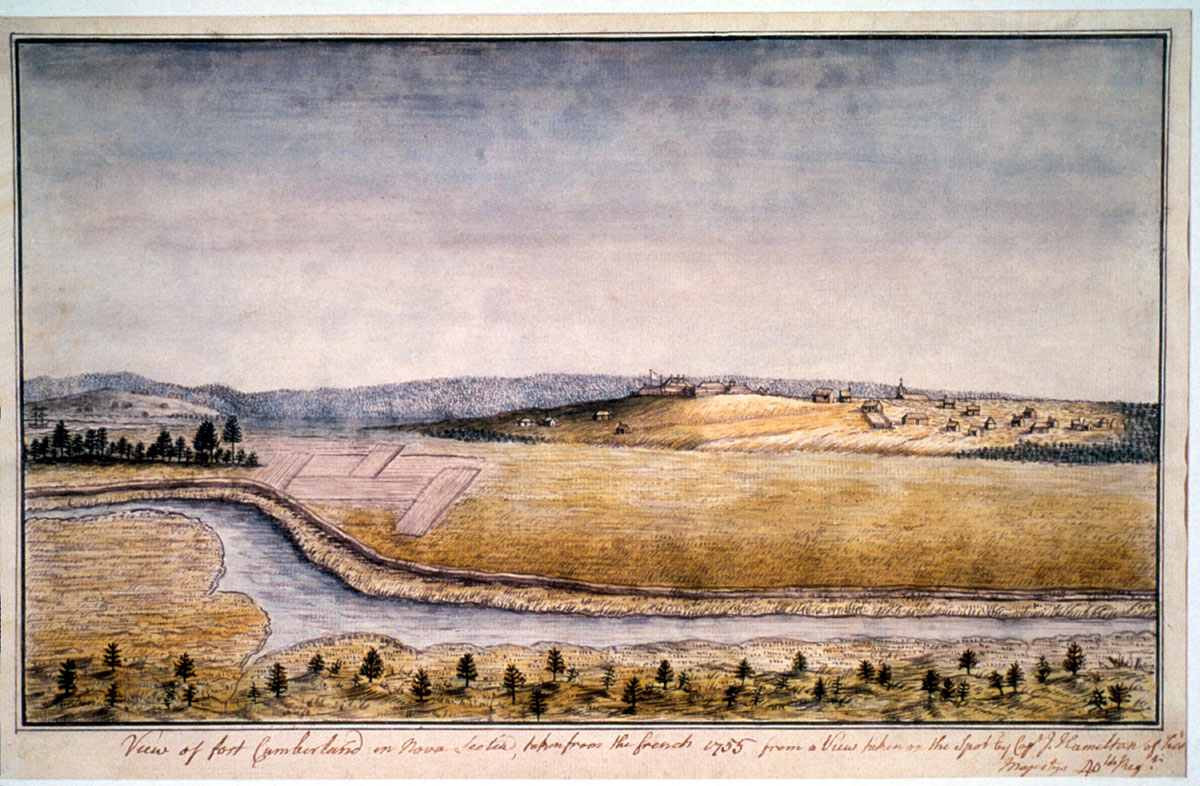email Kerr Canning
Dykes and aboiteaus “ have almost never been regarded as monuments worthy of study and preservation, despite their once-crucial function and defining nature in terms of landscape-change; very few are to be found in sites and monuments records (SMRs), and very few still have been surveyed, excavated, and protected. Their treatment has generally been cavalier.”
Allen, J. R. L. "The Geoarchaeology of Land-Claim in Coastal Wetlands: A Sketch from Britain and the North-West European Atlantic-North Sea Coasts." Archaeological Journal 154 (1997), p. 6
“One reason twentieth century scholars express surprise that many peoples found wetlands attractive is that they do not. In other words, we tend to impose our own cultural geography upon past landscapes.”
Hatvany, Matthew G. 2002. The Origins of the Acadian Aboiteau: An Environmental-Historical Geography of the Northeast. Historical Geography 30, p.128
This paper is available on line

A dyked salt marsh south of Amherst near the salt mine. The view is south west and the Maccan River in the background.

4 The Utilization of North Atlantic Salt Marshes for Agricultural Purposes.
Socities living in the tidal wetland regions of the world have had a long-term relationship with salt marsh ecosystems. Since prehistoric times these fertile estuarine marshlands have been dyked, ditched, and drained for agricultural purposes. Surviving records and archaeological sources indicate that Old World cultures such as the Mesopotamians, the Asians, the Romans, the Greeks, the English, the French, the Dutch etc. transformed salt water and fresh water marshes for economic gain. It is not surprising therefore, that both French and English settlers in North America practiced marshland agriculture; a practice that continued well into the twentieth century.
This section will examine dyking methods and organizational requirements necessary for the practice of pre-WW2 dykeland agriculture.
a) The Diffusion and Transfer of European Dyking Methods on the Salt Marshes of the Atlantic Coast of North American.
b) Commissioners of Sewers: The Importance of Cooperative Labour in Dykeland Farmig _ “Great Statute of Sewers of 1532” passed in the time of King Henry VIII and the Marsh Body
c) Dykes, Aboiteaux and Dales
d) Fodder: Salt Marsh Plants Used to Feed Domesticated Livestock